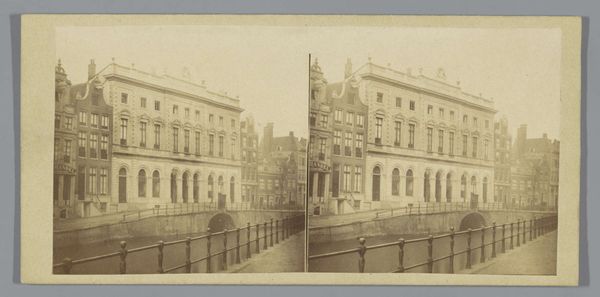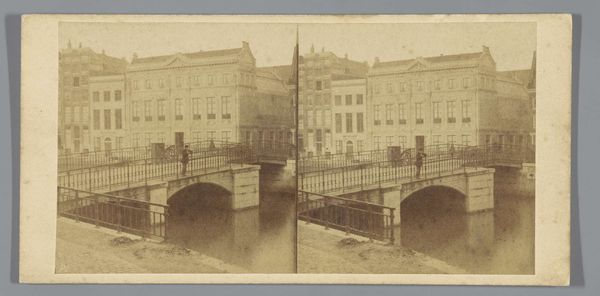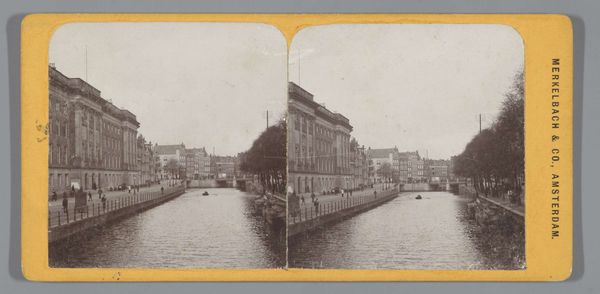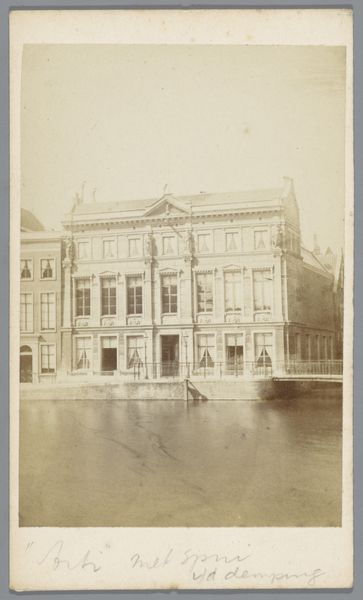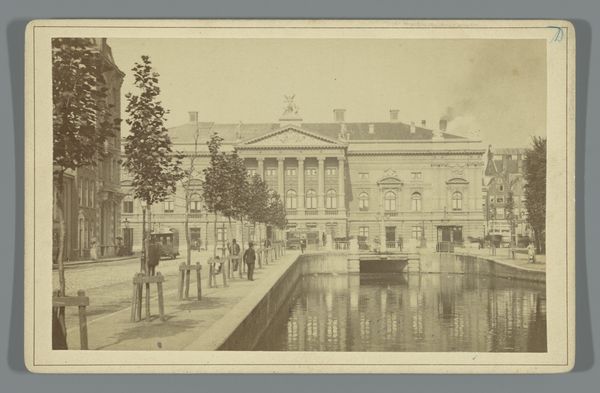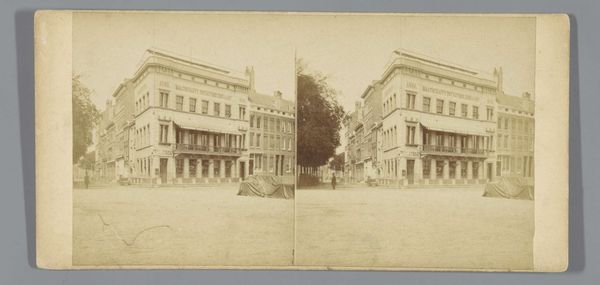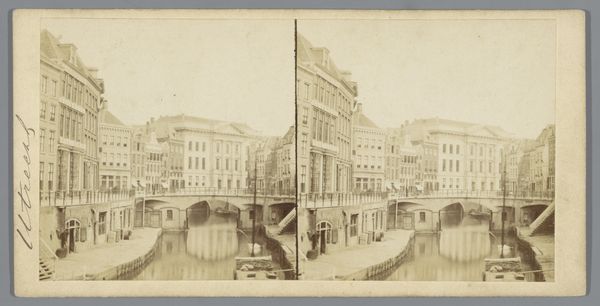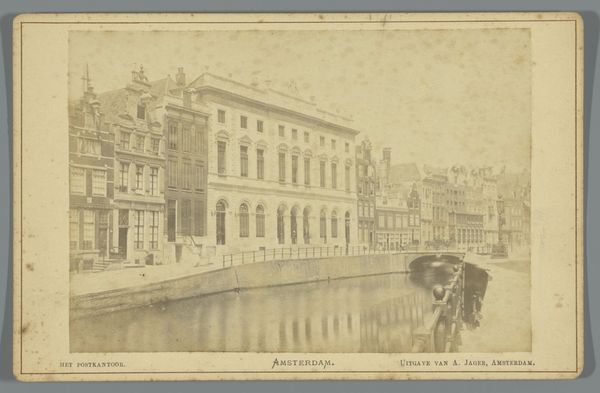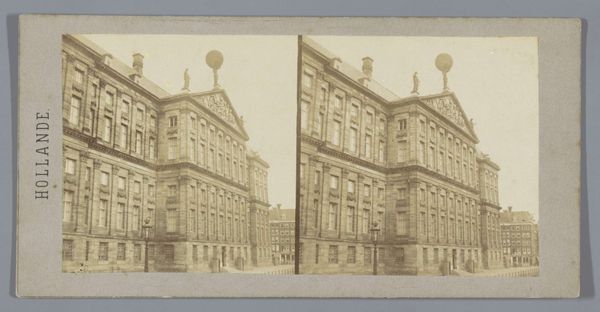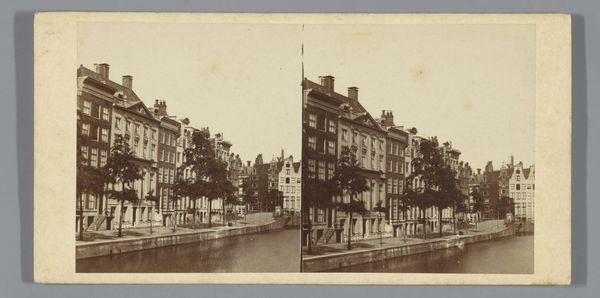
Koninklijk Postkantoor aan de Nieuwezijds Voorburgwal, Amsterdam 1855 - 1865
0:00
0:00
pieteroosterhuis
Rijksmuseum
photography
#
photography
#
cityscape
#
realism
Dimensions: height 85 mm, width 174 mm
Copyright: Rijks Museum: Open Domain
Curator: Here we have Pieter Oosterhuis’s photograph, "Koninklijk Postkantoor aan de Nieuwezijds Voorburgwal, Amsterdam," dating roughly from 1855 to 1865. Editor: It’s strangely calming, isn't it? Despite being a city scene, there's a stillness. The sepia tones contribute, softening the imposing architecture. I immediately notice the materiality—it’s a photographic print, right? I'm drawn to the contrast between the solid architecture and the reflected light on the water. Curator: Indeed. Oosterhuis captured this view of the Royal Post Office during a time of great change in Amsterdam. Photography itself was relatively new, and its ability to document urban spaces offered a fresh perspective on civic life. This area around the Nieuwezijds Voorburgwal was commercially important and in transition. Editor: That’s fascinating, knowing that this “new” medium documented changes already underway. I can’t help but consider the labor and technology involved. Each print represents not just an image, but skilled darkroom practices and the socio-economic dynamics of Amsterdam's emerging industry of image making and image consumption. Curator: Absolutely. And the choice to photograph a prominent building like the Post Office reflects its role in facilitating communication and commerce. It became an important component to Amsterdam’s, and the Netherlands’, larger infrastructure. It symbolized progress, something the middle class took immense pride in at that moment in history. Editor: Right. Thinking about that context enriches the visual experience. It goes beyond just appreciating the composition; we start to see how material production intersected with public service and shaped communal experiences. I am always captivated by images like this when one remembers that human hands shaped that photograph through every step, from emulsion to the finished product. Curator: And that history of human interaction with photographic materials provides important details of Amsterdam’s larger economic, political, and social history, illustrating a profound relationship between society, image, and ideology. This is a view that now resides in the Rijksmuseum. Editor: Indeed, its journey from a physical space within Amsterdam to a preserved artifact is its own kind of commentary. Examining images through labor and materiality creates access points that transform even traditional genres into new possibilities for critical observation.
Comments
No comments
Be the first to comment and join the conversation on the ultimate creative platform.
